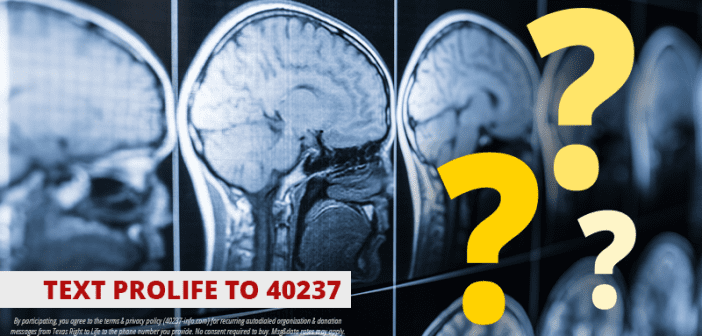You’ve probably known someone, perhaps a loved one, who was declared brain dead. An estimated 15,405 patients in American hospitals were diagnosed and declared brain dead in 2016. That’s about 42 every day.
But what exactly is brain death?
First coined in 1968, brain death (BD) is considered the neurological standard for determining death. In August of 1968, the Ad Hoc Harvard Committee introduced “irreversible coma as a new criterion for brain death.” What followed is decades of fierce debate from the medical community, bioethicists, and legal practitioners.
Determining whether someone was dead used to be relatively straight-forward. If the heart stopped beating and there was no pulse, a declaration of death was pronounced. With the brain death theory however, suddenly, a new way of being dead was put forth as clinically and legally acceptable, even if the patient’s heart is still beating. How confident are we in allowing a protocol that has only been around for fifty years to determine whether someone is dead?
Consider cases where a patient was declared brain dead – thus, legally designated a “deceased person”- and then had that declaration rescinded, meaning the person was no longer dead. Here are but a few examples:
- The well-publicized case of Jahi McMath, a preteen in California. She was diagnosed as having suffered brain death in 2013 and declared dead. She then was moved by her family to New Jersey where in 2014, routine tests used to determine brain death showed some functions of Jahi’s brain had returned. Thus, in 2013 she was considered brain dead, but a mere year later, her brain had recovered some function and she was considered not brain dead anymore.
- In 2019, 12-year-old Taylor C. from Waco, Texas was declared brain dead in a Temple hospital. Further testing pushed by Texas Right to Life showed that despite the diagnosis and declaration of death, Taylor still had brain function. Taylor was suddenly considered alive, again.
- In 2022, 62-year-old Daniel* was rushed to Corpus Christi Medical Center Doctors Regional after suffering a stroke. The hospital first suggested brain death one day after Daniel was admitted, officially declared brain death 4 days later, then rescinded the declaration the following day after detecting pupillary reflexes.
Despite the very troubling notion of once being dead, then being alive again, faulty diagnosis and declarations have very grave legal consequences. Texas law equates brain death with legal death. Providing a brain death diagnosis and declaration to act as a determination of death means the patient is treated as a corpse. This in turn, as many distraught families learn in the midst of their greatest anguish, means hospitals do not need the permission of families to remove life-sustaining treatment of their loved one. This is the stark reality, despite seeing your loved one breathing, despite seeing them maintain their blood pressure, urinate, squeeze your hand, or cry. Once a declaration of brain death has been entered, your consent to remove basic medical care like a ventilator is no longer required. It is at this stage when Texas Right to Life receives many calls from bereft spouses, desperate parents, and helpless children.
If we’re going to say someone is dead, shouldn’t we be sure they really are?
For further reading on the internal medical fight between what actually constitutes brain death and whether the medical community has the tools to adequately diagnose irreversible cessation of all brain activity, continue following Texas Right to Life as we cover this important topic in part two.
Stay tuned for Part 2 of what you need to know regarding an impending brain death diagnosis.
*Patient’s name changed
References:
- Seifi A, Lacci JV. Incidence of brain death in the United States. Clin Neurol Neurosurg. 2020;195:105885. doi:10.1016/j.clineuro.2020.105885.
- Ad Hoc Committee of the Harvard Medical School, “A Definition of Irreversible Coma,” Journal of the American Medical Association 205, no. 6 (1968).
- Thaddeus Pope, “Jahi McMath – A Dispute over Brain Death.”
- Tex. Health & Safety Code § 671.001(b).

